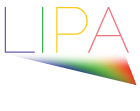Industry Association Regularly Worked with FDA to Help Bring About Important Changes to Regulatory Standards in the U.S.
SAN FRANCISCO, California – July 1, 2019 – The Laser Illuminated Projector Association (LIPA) has said that recent changes to regulatory classification and standards for Laser-Illuminated Projector (LIP) technology announced by the U.S. Food & Drug Administration (FDA) will be very beneficial to the global laser projector industry.
In May this year, the FDA released Laser Notice 57, which goes a long way to harmonizing U.S. nomenclature and regulatory classifications for laser projector technologies with the rest of the world, which is largely adherent to IEC (International Electrotechnical Commission) standards.
Background: Originally, FDA laser safety regulations assumed that all laser projectors posed the same danger as highly collimated lasers used, for example, at laser light shows. LIPA has regularly maintained, with evidence, that LIPs are different, since the source laser beams are optically modified to spread light over a large area, resulting in light output (and therefore much lower safety risks) very much like lamps, and unlike laser beams.
Historically, LIPA (and other industry experts), worked closely with the international laser safety regulators at IEC towards updating their documents and classification to reflect this distinction. The IEC 60825-1 standard was updated to reclassify those laser devices (for example projectors). A new IEC 62471-5 standard defined what safety protocols are appropriate for these projectors. This was largely completed by IEC four years ago (June 2015)
Current status: The release of Laser Notice 57 by the FDA finally links U.S. regulations to the IEC international standards. Now all technical requirements are mostly based on the same, well-defined definitions of optical emission levels, painstakingly developed for the IEC specs.
According to LIPA, these changes now mean that projector manufacturer companies do not have to maintain dual classification schemes anymore. In practice, this means that a projector classified as Class 1 Risk Group 3 by IEC will be identically classified by FDA for the U.S. market. LIPA believes this is a great simplification for projector manufacturers and also for projector installation partners operating in different geographies.
“This is an excellent example of the specific benefits that LIPA can and has brought to the industry,” said Goran Stojmenovik, Chair of the LIPA board. “Although it has taken many years, LIPA has continuously and tirelessly advocated, educated and collaborated with regulators to update obsolete regulations, which our industry believes thwarted widespread adoption of Laser-Illuminated Projectors, especially in the U.S. It’s been a step-by-step process, with the FDA previously responding with some incremental reforms to old regulations, but the disharmony with the rest of the world was a significant frustration, which we feel is now mostly alleviated,” Stojmenovik added.
“We have been working with the FDA since LIPA’s inception; specifically regarding LN57,” Stojmenovik said. “Ever since the first draft for review was published in October 2017, LIPA has been active in providing commentary and industry perspective to the FDA. We are very happy for our industry that the result is the published LN57, which is a great step in harmonizing and easing the U.S. regulation for LIPs”.
Future: With the LN57 published, still quite some work remains. The projector classification is now harmonized, however the FDA still mandates installation conditions that are more restrictive. In addition, the requirement of laser show variances throughout the distribution chain for LIPs in the U.S. still holds. LIPA members are absolutely committed to making sure that their LIPs are operated and maintained safely. This involves not just the FDA labeling regulations, but comprehensive training of service personnel, and safe installation.
LIPA however, believes that the current U.S. variance process and installation restrictions are unnecessarily complicated and overly restrictive. LIPA strives and will continue to work towards getting the installation conditions and legal processes of the laser projectors in the US harmonized with the rest of the world.
About LIPA
LIPA was founded in May 2011 to speed the adoption of laser illuminated projectors into theatres and other public spaces worldwide by providing the information needed to enact regulatory change and educate stakeholders. Laser Illuminated Projectors are enabling higher quality, brighter images, more efficient power usage and lower operating costs for projector installations from movie theatres to classrooms. Learn more at www.LIPAInfo.org
Current list of active LIPA members includes:
Appotronics Co. Ltd
Barco NV
Casio America, Inc.
Christie Digital Systems
Cinemeccanica S.P.A.
Coretronic Corporation
IMAX Corporation
Lighting Technologies International LLC
Mitsubishi Electric Corporation
Moving Image Technologies
NEC Display Solutions of America
OSRAM GmbH
Panasonic Corporation
Seiko Epson Corporation
Sony Electronics, Inc.
Texas Instruments, Inc.
Press Contacts:
Pete Ludé (for LIPA)
CTO, Mission Rock Digital, LLC
Consulting in Media Technology
San Francisco
Office +1-415-326-4KTV Mobile +1-310-707-5114

